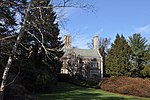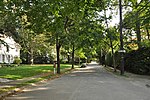Pine Manor College
1911 establishments in Massachusetts2020 disestablishments in MassachusettsDefunct private universities and colleges in MassachusettsEducational institutions disestablished in 2020Former women's universities and colleges in the United States ... and 2 more
Pine Manor CollegeUniversities and colleges established in 1911
Pine Manor College (PMC) was a private college in Chestnut Hill, Massachusetts. It was founded in 1911 and was historically a women's college until 2014. Originally the college was a post-graduate program of Dana Hall School, an all-girls preparatory high school, although later on it was an independent college serving primarily students of color. In May 2020, with the institution's longterm financial instability exacerbated by the COVID-19 pandemic, Boston College announced that it would take over the college, in a graduated scheme that allowed outgoing Pine Manor students to study on their campus through the 2022 school year.
Excerpt from the Wikipedia article Pine Manor College (License: CC BY-SA 3.0, Authors).Pine Manor College
Woodland Road,
Geographical coordinates (GPS) Address Nearby Places Show on map
Geographical coordinates (GPS)
| Latitude | Longitude |
|---|---|
| N 42.316925 ° | E -71.156386111111 ° |
Address
Woodland Road 112
02467
Massachusetts, United States
Open on Google Maps






